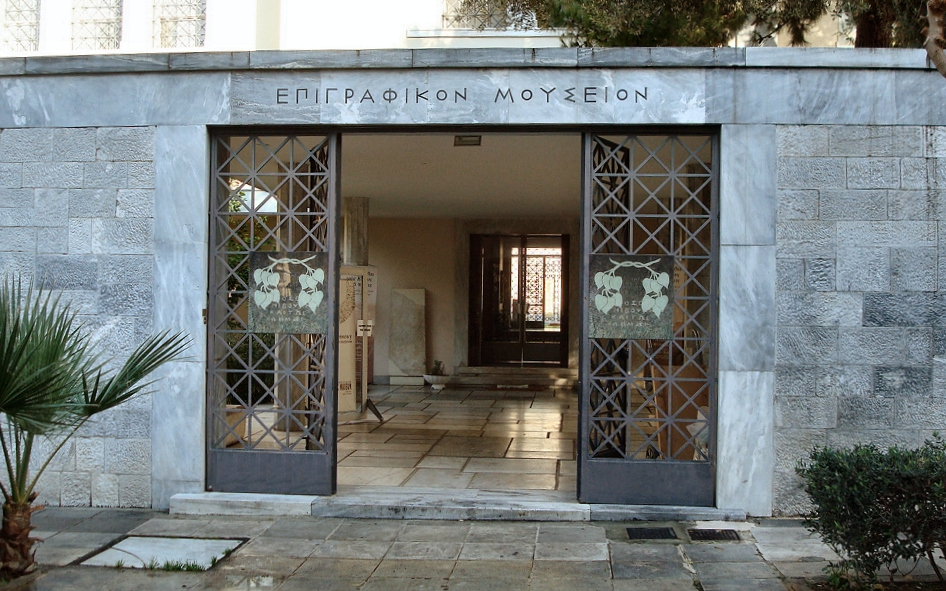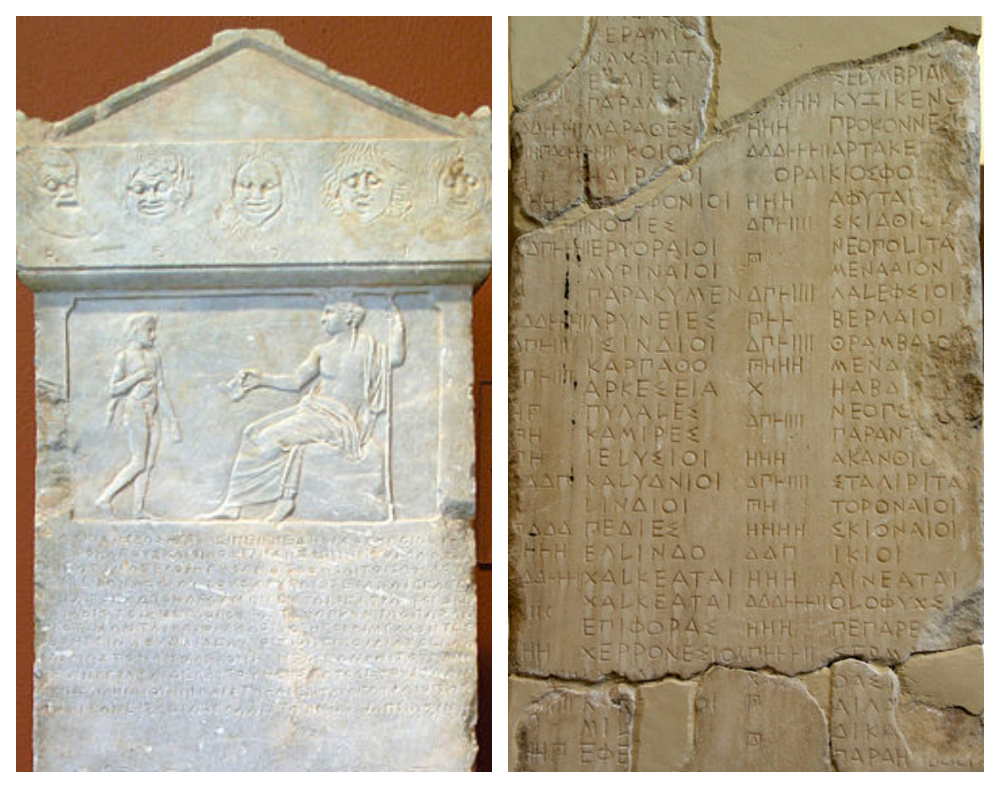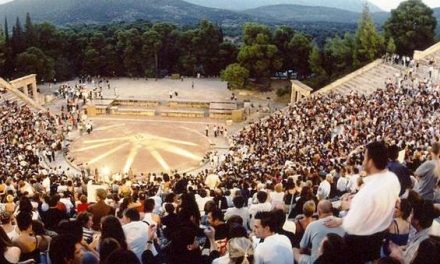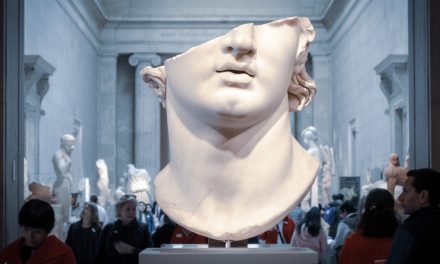The Epigraphic Museum in Athens is unique in Greece and the largest of its kind in the world. It hosts a collection of 14,078 inscriptions, written mostly in Greek and originating primarily from Greece, and dating from the early historic times to the Late Antiquity.
The Museum is housed in the south wing of the building of the National Archaeological Museum of Athens. Its purpose is the scientific research, study, registration, preservation, photographic documentation, digitisation and exhibition of ancient Greek inscriptions. The Museum comprises a specialised library, and hosts temporary exhibitions of ancient Greek inscriptions, as well as art exhibitions inspired by Greek writing and ancient inscriptions.
 History
History
The museum was founded in 1885, when its initial collections were installed in the south wing of the neo-classical architectural complex of the National Archaeological Museum. In the 1953-1960 period, the original building was extended with additions designed by architect Patroklos Karantinos, while the museum’s current form dates to a renovation that took place in the 1990s.””
The museum’s core collection was gathered by archaeologist Kyriakos Pittakis (1798-1863), founding member of the Archaeological Society of Athens. inscriptions donated by the Archaeological Society, as well as finds from excavations on the Acropolis site were later added to the original collection, which continued expanding as excavations progressed in Attica and throughout Greece, until the 1960s.
Due to the limited space, subsequent findings were not always sent to the museum, which received only a few inscriptions from private donations, as well as new fragments of texts from other Athenian museums, as in the case of the inscriptions from the Agora of Athens.
 Left: Honorific decree with the inscription: “The deme Aixone honours the choregoi Auteas and Philoxenides” 313–312 BC (detail), by Marsyas, via Wikimedia Commons; Right: Second epigraphic stele of the lists of Attic tribes for the years 439/8-432/1 B.C., by Marsyas, via Wikimedia Commons
Left: Honorific decree with the inscription: “The deme Aixone honours the choregoi Auteas and Philoxenides” 313–312 BC (detail), by Marsyas, via Wikimedia Commons; Right: Second epigraphic stele of the lists of Attic tribes for the years 439/8-432/1 B.C., by Marsyas, via Wikimedia Commons
The collections were initially classified at the end of the 19th century by archaeologist Vasileios Leonardos (1857-1930): the inscriptions were sorted in categories by subject and displayed in this way, due to the influence of the academic project Inscriptiones Graecae, which consisted in the collection and publication of all then-known ancient inscriptions from Greece.
Today, the museum is gradually adopting modern concepts of museology in displaying the exhibits, with bilingual (Greek-English) information panels. A full photographic archive of the collection is being assembled for future visitors. Educational programmes for schools are also often hosted by the museum.
Watch a “video walk at the Epigraphical Museum“.
Read also via Greek News Agenda: Peristera: Greece’s first underwater museum; Exploring the Acropolis #MuseumFromHome; Goulandris New Museum opens its gates
N.M. (Intro picture: Sacred law concerning the Acropolis and the Hekatompedon 485/4 BCE? [detail], by Marsyas, via Wikimedia Commons)
TAGS: ARCHEOLOGY | ATHENS













